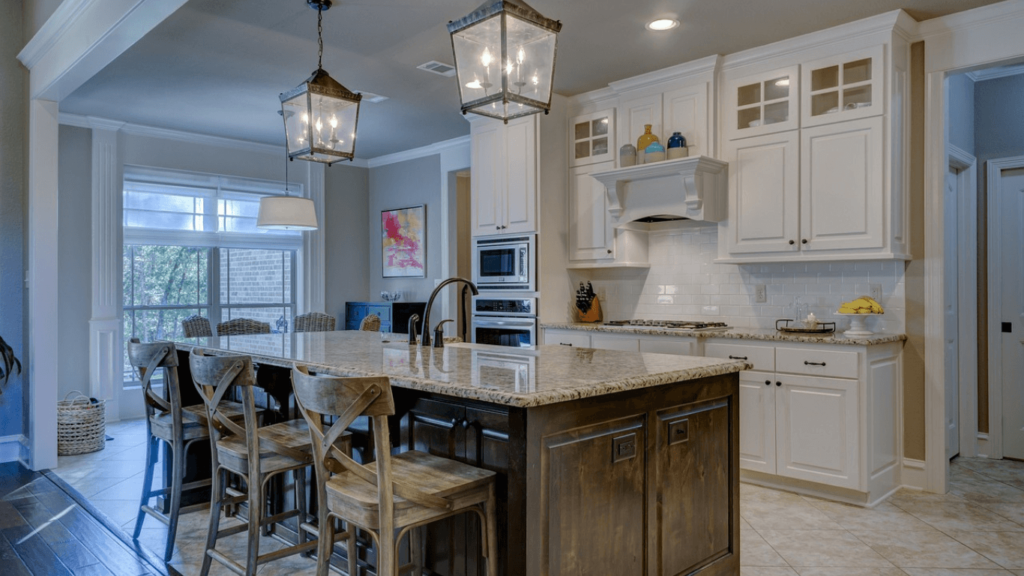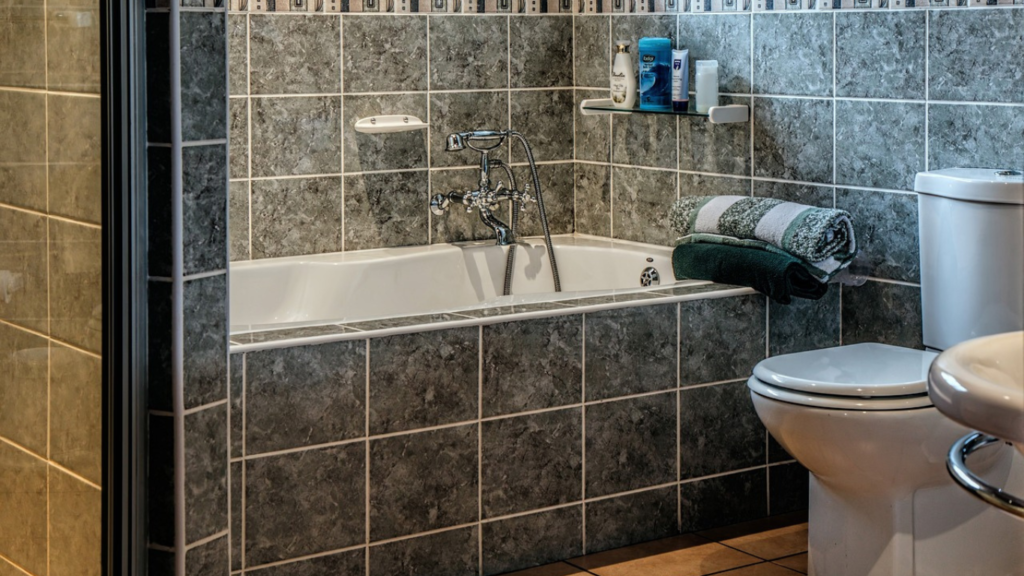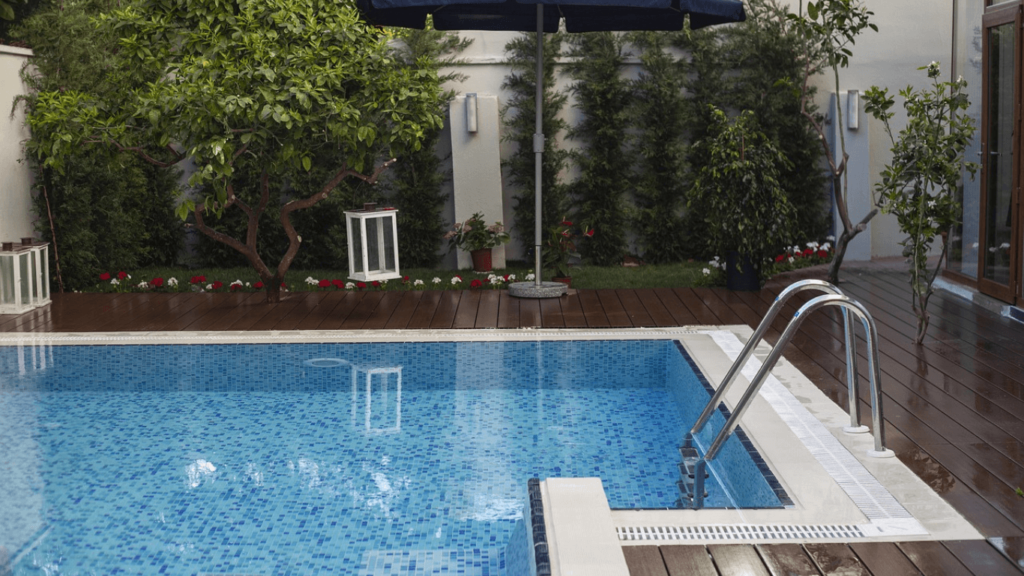Tile selection for your home involves a blend of aesthetic appeal, functionality, and durability. Best tiles for home are versatile, available in various materials, shapes, sizes, and colors, making them suitable for different rooms. This article is the ultimate guide for tile selection to every room.
The right choice not only enhances the beauty of the space but also ensures long-lasting performance. This article delves into the factors to consider when selecting tiles for different rooms in your home, from the kitchen and bathroom to the living room and outdoor spaces.
Tiles selection for every room
Understanding best Tiles: Complete you need to know about home materials before house construction
Before diving into room-specific recommendations, it’s crucial to understand the common tile materials for tile selection:
- Ceramic Tiles: Affordable and available in many designs, ceramic tiles are ideal for walls and floors in low to moderate traffic areas. They are made from clay that is fired at a high temperature and then glazed for durability and appearance.
- Porcelain Tiles: Denser and more durable than ceramic, porcelain tiles are suitable for high-traffic areas and even outdoor use. They are made from finer clay and fired at a higher temperature, making them more water-resistant and harder.
- Natural Stone Tiles: These include marble, granite, slate, and travertine, offering a luxurious look but requiring more maintenance. Each type of stone has its unique characteristics and appeal, with marble being known for its elegance, granite for its strength, slate for its texture, and travertine for its rustic look.
- Glass Tiles: Best for backsplashes and accent walls due to their reflective properties and sleek appearance. They are easy to clean and can create stunning visual effects with their translucency and wide range of colors.
- Cement Tiles: Known for their vibrant patterns and durability, suitable for floors and walls. These tiles are handmade, offering unique designs and a matte finish that adds a vintage or artistic touch to any space.
- Mosaic Tiles: Small tiles, often used to create intricate designs and patterns, perfect for adding visual interest. They can be made from ceramic, porcelain, glass, or stone, and are often used in areas that need detailed and decorative tiling.
Also read related topics:
- upvc doors and windows-Complete you need to know
- Timber:Top 5 defects,preservation method
- Batch mixer types | batching plant
- Prestressed concrete | 2 methods
- 6 corrosive metals | corrosion of steel
- Retaining wall cost estimation in 7 steps
- Materials calculations for plastering in 1 click
- Concrete calculator for slab in 1 click
Tile selection based on Rooms
Here is the ultimate guide to best tiles for home construction based on every room .
- Kitchen
- Bathrooms
- Living Room
- Bedrooms
- Outdoors
1. Kitchen Tile Selection

The kitchen is often considered the heart of the home, and the tiles selection here must balance style and functionality.
Kitchen tiles must endure high traffic, spills, and frequent cleaning, making durability and ease of maintenance top priorities.
For kitchen floors, porcelain and ceramic tiles are excellent choices due to their robustness and low porosity, which enhance stain resistance and simplify cleaning. Additionally, look for tiles with slip-resistant surfaces to ensure safety, especially in areas prone to moisture.
Backsplash:
- Material: Kitchen tiles must endure high traffic, spills, and frequent cleaning, making durability and ease of maintenance top priorities. For kitchen floors, porcelain and ceramic tiles are excellent choices due to their robustness and low porosity, which enhance stain resistance and simplify cleaning. Additionally, look for tiles with slip-resistant surfaces to ensure safety, especially in areas prone to moisture.
- Design: Consider mosaic tiles for intricate designs or subway tiles for a classic look. Bold colors or patterns can add a focal point, making the backsplash an eye-catching feature.
- Durability: Ensure the material is resistant to heat and stains, as the backsplash will be exposed to cooking splatters and high temperatures. Choose a grout that is also stain-resistant to maintain the clean look of the tiles.
Flooring:
- Material: Porcelain or ceramic tiles are ideal due to their durability and resistance to moisture and stains. Porcelain is especially recommended for its higher density and lower water absorption rate. Natural stone tiles can also be used for a luxurious touch, but they require more maintenance.
- Design: Large-format tiles can make a small kitchen look bigger by reducing grout lines and creating a more seamless appearance. Patterned tiles can add visual interest and define different areas within the kitchen. Choose a finish that provides some slip resistance, especially in areas prone to spills.
- Durability: Opt for tiles with a high PEI (Porcelain Enamel Institute) rating for better wear resistance. A rating of 3 or higher is suitable for residential kitchens, ensuring the floor can withstand foot traffic, dropped utensils, and other common kitchen activities.
Ultimately, the key to selecting the right kitchen tiles lies in finding the perfect blend of practicality and style, ensuring that the tiles not only enhance the kitchen’s functionality but also contribute to a harmonious and visually appealing environment.
2. Bathroom Tile Selection

Bathrooms are exposed to moisture and require tiles that can withstand a humid environment while providing a safe and stylish surface.
Walls and Shower Area tile selection:
Material: Ceramic, porcelain, and glass tiles are excellent choices. Porcelain is especially good for its low water absorption rate, making it highly resistant to moisture. Glass tiles can add a touch of luxury and are easy to clean.
Design: Light-colored tiles can make a small bathroom appear larger by reflecting more light. Consider using mosaic tiles for shower floors to provide extra grip and reduce the risk of slipping. Vertical tiles can create an illusion of height, while horizontal tiles can make the space feel wider.
Choose grout that is waterproof and resistant to stains. Epoxy grout is a good option for areas exposed to water.
Flooring tile selection
When it comes to bathroom floors, slip resistance is a key factor to consider. Tiles with a non-slip surface or a matte finish can significantly reduce the risk of accidents.
Look for tiles with a high coefficient of friction (COF) rating to ensure safety. Textured tiles can also provide additional grip, making them ideal for shower floors where water can create slippery conditions.
Ease of cleaning is another essential aspect to think about when selecting bathroom tiles. Smooth, glazed tiles are easier to clean and maintain compared to unglazed or textured tiles. Large-format tiles with fewer grout lines can also minimize the areas where mold and mildew might develop, making cleaning more efficient.
Material: Porcelain and natural stone are popular choices. Natural stone like slate offers a non-slip surface and unique texture.
Design: Consider large-format tiles to reduce grout lines and make cleaning easier. Textured finishes can provide better slip resistance, especially in wet areas. Heated floor tiles can add comfort, making the bathroom more inviting.
Durability: Choose tiles with a textured or matte finish for better grip and safety. Ensure the tiles are rated for floor use and are resistant to water and humidity.
3. Living Room Tile Selection

The living room is a space for relaxation and entertainment, and the tiles here should reflect a balance of comfort, elegance, and durability.
Flooring tile selection:
Material: Porcelain, ceramic, and natural stone are common choices. Wood-look tiles provide the warmth of wood with the durability of tile, making them an excellent option for living rooms. Natural stone tiles like marble or travertine can add a luxurious touch but require more maintenance.
Design: Large-format tiles with minimal grout lines create a seamless look that makes the living room appear more spacious. Neutral colors can make the room feel more open, while patterned tiles can serve as a statement piece or focal point. Consider the overall design theme of the room when choosing the tile color and pattern.
Durability: Select tiles with a high PEI rating to withstand foot traffic and furniture movement. For living rooms that see heavy use, choose tiles that are scratch-resistant and easy to clean. Ensure the grout is also durable and stain-resistant to maintain the floor’s appearance.
4. Bedroom Tile Selection

Tiles in the bedroom should create a cozy and comfortable atmosphere while being easy to maintain.
Flooring tile selection:
Material: Ceramic, porcelain, and wood-look tiles are suitable. Natural stone can add a touch of luxury but may feel cold underfoot unless paired with underfloor heating. Wood-look tiles offer the warmth and appearance of hardwood with the durability and easy maintenance of tile.
Design: Choose warm tones and textured finishes to create a cozy ambiance. Neutral colors and subtle patterns can enhance the relaxing atmosphere of the bedroom. Consider using underfloor heating for added comfort, especially if you choose natural stone or porcelain tiles.
When choosing colors and patterns for bedroom tiles, it is essential to consider hues that promote rest and relaxation. Neutral tones such as beige, gray, and soft pastels are ideal, as they create a serene environment. Patterns should be subtle and not overly busy to avoid visual clutter. Additionally, larger tiles can make the room feel more spacious and less fragmented.
Durability: Opt for tiles that are comfortable underfoot and have good thermal properties. Ensure the tiles are scratch-resistant and easy to clean, as bedrooms also serve as spaces for relaxation and should be low-maintenance.
Read more:
- Pert Project management: 3 time estimates
- critical path method |12 technical terms
- Gantt chart | project management
- 2 Resource allocation | Project management
- RCC column cost estimation in 6 steps
- Retaining wall | Cost estimation 3 steps
5. Outdoor Tile Selection

Outdoor areas such as patios, walkways, and pool surrounds require tiles that can withstand the elements.
Patios and Walkways tile selection:
Material: Porcelain, natural stone, and concrete tiles are ideal for their durability and slip resistance.
Natural stone like slate or granite offers a rugged and natural look.
Design: Consider using textured or matte finish tiles to prevent slipping, especially when wet. Large-format tiles can create a seamless transition between indoor and outdoor spaces, making the area feel more expansive. Choose colors that complement the surrounding landscape and architecture.
Durability: Ensure the tiles are frost-resistant and can handle temperature fluctuations. Outdoor tiles should be able to withstand heavy foot traffic, weather changes, and potential impacts from outdoor furniture and equipment.
Pool Surrounds tile selection:
Material: Porcelain and natural stone are excellent choices for their slip resistance and durability. Travertine is a popular choice for pool surrounds due to its natural grip and ability to stay cool underfoot. Porcelain tiles are also a great option for their water resistance and variety of designs.
Design: Choose tiles that complement the pool’s color scheme. Mosaic tiles can be used to add decorative elements, such as borders or patterns, enhancing the overall aesthetic of the pool area. Light-colored tiles can help keep the surface cooler in hot weather.
Durability: Select tiles that are water-resistant and have a textured finish to prevent slipping. Ensure the tiles are resistant to chlorine and other pool chemicals, and choose grout that is also waterproof and resistant to stains and mold.
Tile selection : Conclusion
Selecting the best tiles for home in each room involves considering the specific needs and characteristics of the space. Whether it’s the moisture resistance required in bathrooms and kitchens, the durability needed for high-traffic areas like living rooms, or the slip resistance crucial for outdoor spaces, each room has its unique demands.
By understanding these requirements and exploring the various tile materials and designs available, you can make informed decisions that enhance both the functionality and aesthetics of your home.
Consulting with interior design professionals can significantly streamline your tile selection process. Tile experts, interior designers, and contractors can provide invaluable insights and recommendations tailored to your specific needs, ensuring that your choices align with the room’s functionality and your personal style.
Opt for tiles that not only fit your immediate design vision but also offer ease of upkeep. For instance, while natural stone tiles exude elegance, they may require more frequent sealing and cleaning compared to ceramic or porcelain tiles. Understanding the maintenance demands of your chosen tiles can help you make selections that will remain beautiful and functional for years to come
Prioritizing both function and aesthetics ensures that each room not only meets your practical needs but also reflects your personal taste. By considering the specific requirements of each room, consulting with professionals, and factoring in long-term maintenance, you can achieve a cohesive and beautiful home design. Remember, the right tile selection can significantly enhance the overall ambiance of your home, making it a true sanctuary of comfort and style
Also Read:
- Double room building estimation|6 steps
- Single room |5 Building estimation items
- Masonry platform cost estimation:7 steps
Frequently asked questions (FAQs) about tile selection
Here are five frequently asked questions (FAQs) about tile selection for home construction, along with their answers:
1. During tile selection What factors should I consider for my home?
When selecting tiles, consider factors such as the room’s function (e.g., bathroom, kitchen, living room), desired style (modern, classic, rustic), durability (especially for high-traffic areas), maintenance requirements, and budget.
2. What are the different types of tiles available for home construction?
There are several types of tiles to choose from, including ceramic, porcelain, natural stone (like marble, granite, slate), glass, and even metal tiles. Each type has its own unique characteristics in terms of durability, appearance, and suitability for different areas of the home.
3. How do I choose the right size of tiles for a particular room?
Selection of Tile size can have huge impact on looks of room. Larger tiles tend to make a room look more spacious, while smaller tiles can create a more intricate and detailed appearance. Consider the size of the room and the desired aesthetic when choosing tile sizes.
4. What is the best tile for bathrooms and kitchens?
For bathrooms and kitchens, where moisture and spills are common, it’s essential to choose tiles that are water-resistant and easy to clean. Porcelain tiles are often recommended for these areas due to their durability, low porosity, and wide range of design options. Natural stone tiles like slate or marble can also be used if properly sealed.
5. How can I ensure my tile selection complements the overall design of my home?
To ensure your tiles complement your home’s design, consider factors such as the existing color scheme, architectural style, and overall ambiance you want to achieve. Take samples home to see how they look in your space under different lighting conditions before making a final decision.
Jump to other articles:

